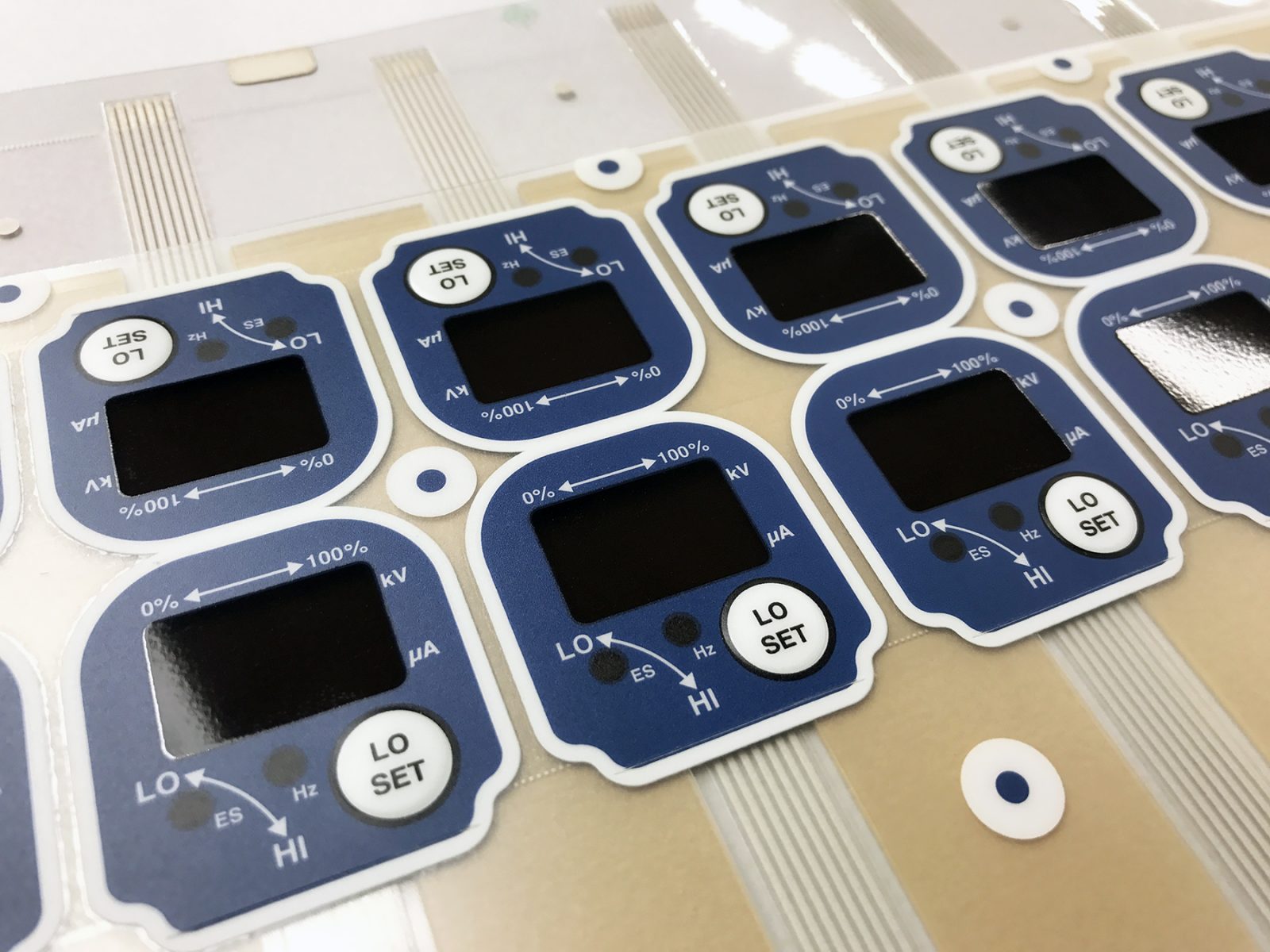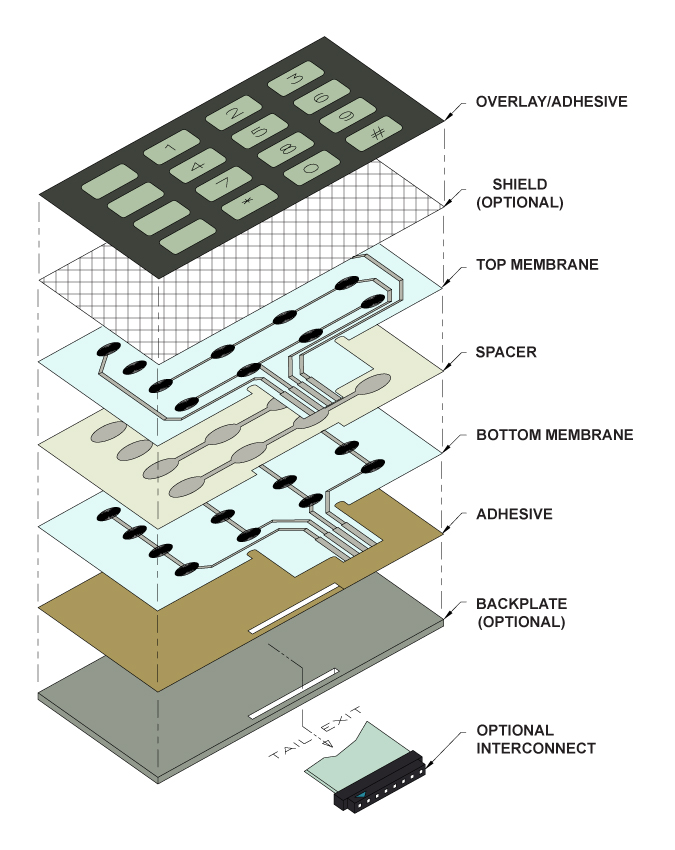How Membrane Switches Ensure Reliable and Longevity in Electronics
How Membrane Switches Ensure Reliable and Longevity in Electronics
Blog Article
Membrane Layer Change Innovation: The Key to Reputable and Affordable User Interfaces
Membrane switch modern technology has emerged as an essential element in the style of individual interfaces, supplying both dependability and cost-effectiveness throughout a diverse variety of applications. As we check out the complex advantages of membrane layer switches, their capacity for development increases questions regarding future applications and developing fads.
Understanding Membrane Layer Switch Modern Technology
Membrane switch innovation is an extensively made use of interface remedy in different digital tools, offering a seamless mix of functionality and style. This modern technology integrates numerous layers of materials, generally containing a visuals overlay, spacer layer, and a circuit layer. The graphic overlay displays the user interface elements, while the spacer layer divides the circuit layer from the overlay until an individual turns on a switch.
When pressure is used to the overlay, the circuit layer finishes the electrical circuit, sending out a signal to the device. This system enables numerous arrangements, consisting of tactile responses and backlighting choices, boosting user interaction. Membrane switches are generally manufactured making use of durable materials such as polyester or polycarbonate, making sure long life and resistance to environmental aspects like dampness and dirt.
The versatility of membrane layer changes allows their application in diverse sectors, including clinical tools, customer electronics, and commercial controls. Their portable style allows for integration into space-constrained environments, supplying an effective user interface without jeopardizing visual appeal. Comprehending the ins and outs of membrane layer switch innovation is essential for makers and developers seeking to produce trusted and effective human-machine interfaces.
Trick Benefits of Membrane Buttons
While numerous interface services exist, membrane layer switches over offer distinct advantages that make them a favored selection in numerous applications. One of the main benefits is their sturdiness; membrane layer switches are created to withstand severe ecological problems, including wetness, dust, and temperature variations, making certain durable performance. This resilience dramatically minimizes the requirement for constant substitutes, therefore decreasing total maintenance costs.

In addition, membrane layer switches are light-weight and portable, making them suitable for applications where space is restricted. Their inconspicuous style adds to a streamlined look without compromising functionality.
Cost-effectiveness is additionally a remarkable advantage, as the manufacturing procedure for membrane switches often tends to be less costly contrasted to traditional mechanical buttons. This cost, combined with their integrity and simplicity of installation, placements membrane switches over as a functional service for a wide variety of industries looking for efficient and reliable interface.
Applications Throughout Different Industries
How do membrane layer switches adapt to the varied demands of different sectors? Membrane button innovation is significantly acknowledged for its versatility, making it appropriate for a vast array of applications throughout several fields. In the medical area, membrane buttons are made use of in diagnostic tools and patient tracking devices, where their toughness and ease of cleaning are important for preserving hygiene requirements. The auto industry utilizes these buttons in dashboards and control board, supplying a streamlined aesthetic while making certain user-friendly operation.
In consumer electronic devices, membrane switches give a compact solution for remotes and home appliances, improving individual experience via instinctive design. Additionally, the industrial industry leverages membrane layer switches for equipment control board, gaining from their resistance to harsh environments, such as wetness and dust.
Armed forces and aerospace applications likewise use membrane layer buttons for their integrity and capability to hold up against severe problems, guaranteeing operational efficiency in vital circumstances. Moreover, the food and drink market embraces these switches for automated systems, where cleanliness and convenience of procedure are critical. Inevitably, membrane layer switches are tailored to meet the distinct demands of each industry, proving their vital function in modern innovation interfaces
Design and Modification Alternatives

In the world of membrane switch modern technology, style and customization alternatives play an essential function in enhancing capability and individual communication. These buttons can be tailored to meet certain operational needs and aesthetic preferences, making them flexible components in various applications.
Among the main modification options is the layout of the switch itself, which can be created to accommodate one-of-a-kind interface and ergonomic considerations. By readjusting the shape, dimension, and setup of switches, suppliers can develop user-friendly layouts that assist in ease of use. In addition, the consolidation of various colors and visuals overlays enables branding and enhanced visibility, making sure that customers can quickly determine features.
In addition, membrane switches can be engineered with numerous tactile comments devices, such as raised switches or audible clicks, to boost the individual experience. Different products can also be chosen for durability and ecological resistance, resolving elements such as wetness, temperature level fluctuations, and chemical exposure.
Eventually, the considerable style and customization choices available in membrane layer button innovation click reference encourage businesses to produce tailored options that not just fulfill useful requirements but likewise line up with their branding and functional demands.

Future Fads in Membrane Layer Switches
As membrane switch innovation remains to advance, future trends are increasingly concentrated on improving customer experience and incorporating innovative performances. One substantial fad is the integration of touch-sensitive and capacitive innovations into standard membrane switches. This development enables more intuitive customer interfaces, giving responsive responses while preserving a smooth style.
Another emerging fad is the usage of eco pleasant materials, driven by the growing need for lasting manufacturing methods. Producers are seeking to lower their carbon impact by using recyclable substratums and low-impact inks, aligning with international sustainability goals.
Moreover, the increase of the Web of this website Things (IoT) is prompting the unification of smart functions right into membrane switches. Boosted connection choices will make it possible for tools to interact with each other, permitting for smooth combination right into wider systems.
In addition, innovations in printing innovations, such as electronic printing, are permitting greater layout versatility and customization. This makes it possible for suppliers to generate complex styles and vibrant shades cost-effectively.

Final Thought
In conclusion, membrane layer button technology represents an essential development in customer interface design, supplying significant advantages in longevity, customization, and cost-effectiveness. As developments continue to emerge, particularly in touch-sensitive interfaces and sustainable materials, the capacity for membrane layer changes to boost customer experience and capability continues to be visit promising.
Report this page